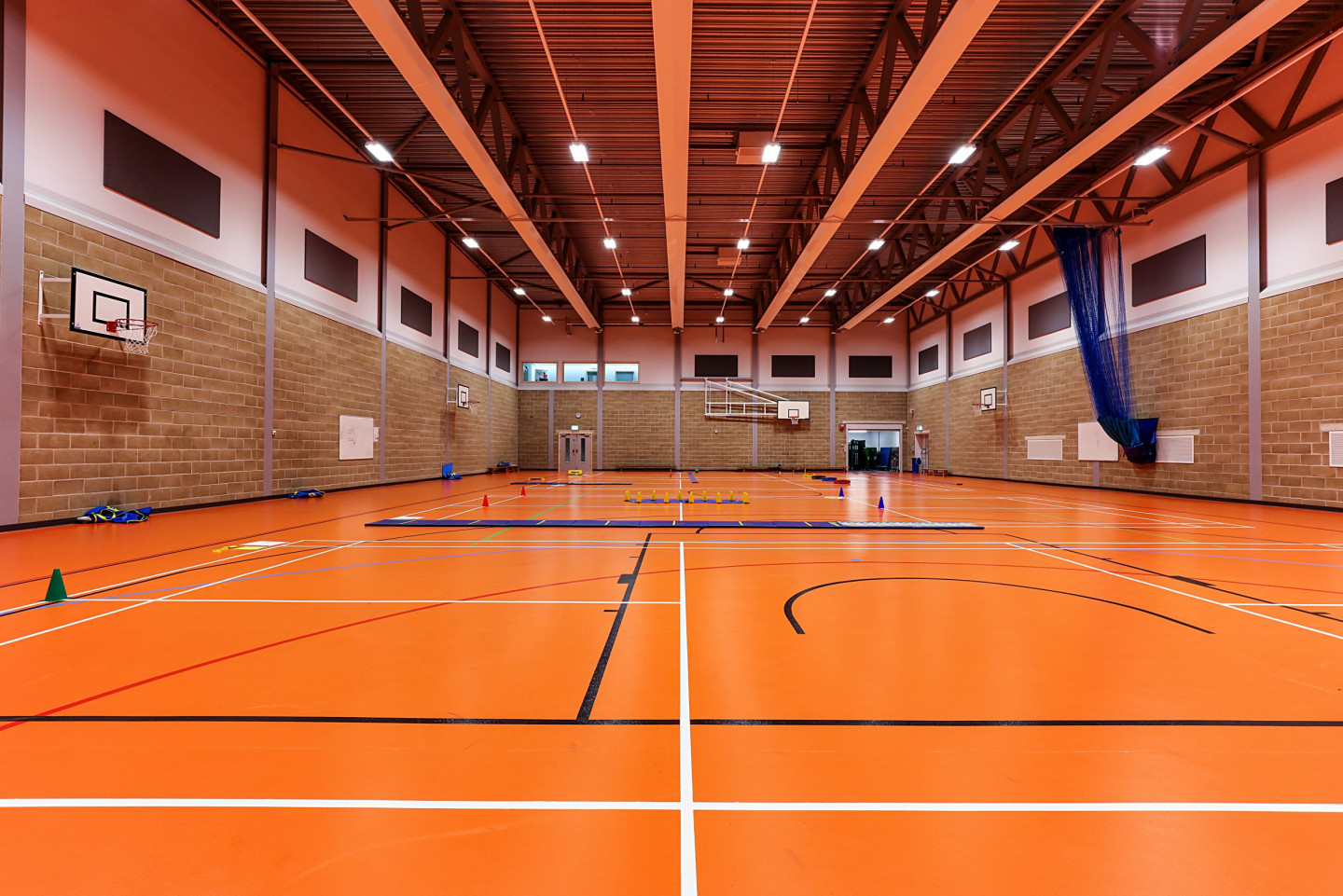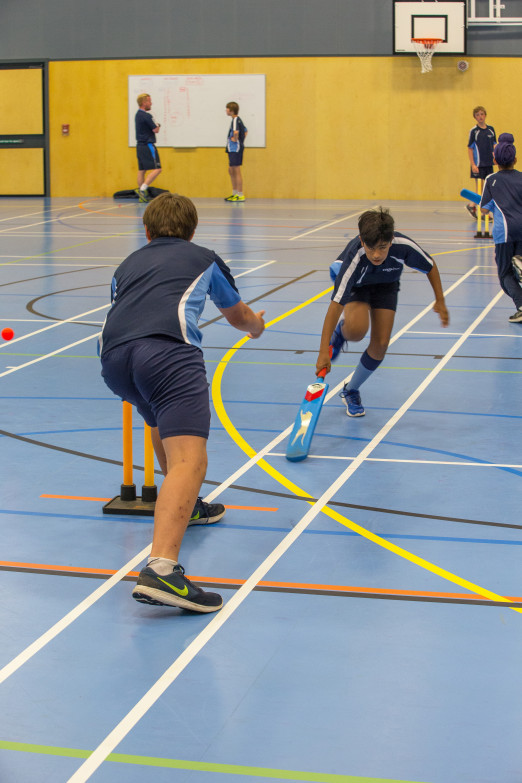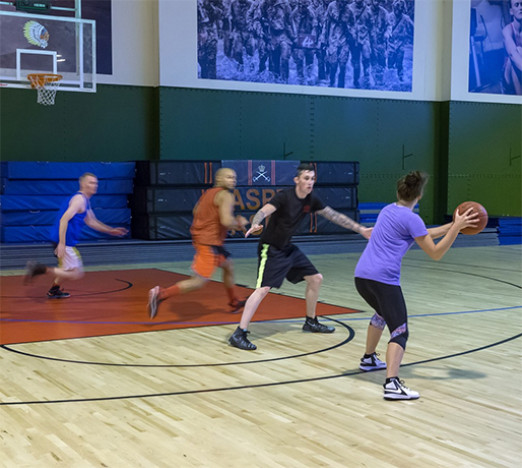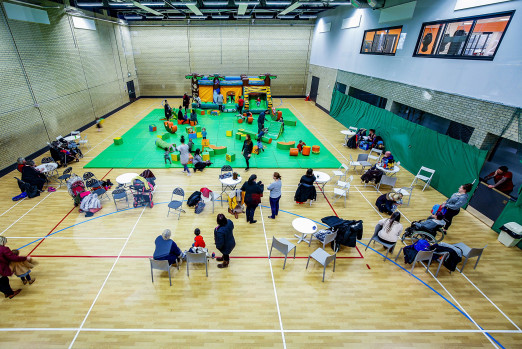A key function of sports flooring is to help protect players from injury and enhance their athletic performance says Nick Egan, Technical Manager, Gerflor
A sports floor surface is arguably the most important element of a sporting facility to its players, so those that design, build and manage indoor sports premises need high quality and sustainable sports floorings that provide the comfort, safety and performance aspects that are so crucial to everyone taking part in sport.

The fundamental importance of the role of indoor sports floorings to environments like clubs, gyms, sports halls, leisure centres and multi-use facilities can therefore not be underestimated, regardless of whether they are low impact or elite performance sport locations. This also extends to educational establishments like schools, colleges and universities where long-term injuries to the bones, joints and ligaments of budding athletes, especially those still growing, could cut short a potential sporting career.
Clearly aesthetics, acoustics, hygiene, resistance to wear, easy maintenance and good indoor air quality are key factors to sports venues. But when it comes to reducing the risk of injury, minimising the severity of an injury, should it occur, and helping to prevent both short and long-term impact injuries, then the choice of sports flooring is critical.

For specialist sports facilities with volley ball, badminton and other racket sport courts, for example, it is a case of selecting the ideal sports surface for the game so specifiers may need guidance from specification specialists. Equally important is the correct choice of flooring for multi-use venues where there is a need to accommodate other activities in addition to sport such as concerts, assemblies and examinations which require the use of occasional tables and chairs.
Flooring manufacturers specialising in sports flooring have therefore developed new product innovations to provide the best possible flooring solutions to meet the needs of varying sports facilities and to achieve the perfect balance between co-efficient of friction and easy movement.

There are different types of sports floor and the most commonly used include point elastic flooring for multi-use to elite sport levels, area elastic floors such as sprung wooden floors that are good for ball bouncing games, and floors with both point elastic and area-elastic properties offering combined benefits.
European sports flooring standard EN 14904 outlines the minimum performance requirements for a flooring to be classified as an indoor sports flooring. The standard covers point elastic and areaelastic sports floorings.
Point elastic floorings offer three levels of shock absorbency compared with concrete to cater for different usage. A point elastic P1 flooring provides 25% of shock absorbing retention, with P2 35% and P3 45% respectively. A P3 flooring provides the greatest level of impact control and will instantly absorb impact with the floor thereby meeting the requirements of elite sport flooring.
Additionally, the Impact Protection Index (IPI) indicates the protection levels a sports flooring will provide. The higher the IPI level, the higher the protection from pain and immediate injury when falling, diving or sliding on the floor. The highest level achieving products on the market have an IPI of 88%, giving greater protection to players of high risk sports. Whereas, an IPI of 50% is more suited to lower risk sports.
Combined elastic and double density foam sport floor systems also benefit from foam technology that enables the lower layer to compress while the upper layer remains firm. The resulting deformation trough is twice the area of the foot allowing for greater freedom of movement in rotation whilst permitting a secure foothold that minimises risk of injury.
Ultimate, shock absorbing P3 floorings are 12mm thick with a foam layer and an IPI level of 88%. P3 floorings comprising calendered PVC sheets reinforced with fibre glass grid also give outstanding stability. A P1 flooring with a double fibre glass grid offers greater resistance to indentation in multiuse locations.
What’s more sports floorings with built-in, easy maintenance, intelligent surface treatments provide a perfect compromise between slide and grip when appropriate sports shoes are worn, and a lower risk of friction burns.
Both permanent and portable system sports floorings are available to address the needs of clubs, federations and committees of varied sporting events. Point elastic floorings come in permanent and portable versions. A P3 point elastic flooring comprises two layers which are bonded together for permanent installations. Portable floorings include ready-to-go rolls which joint easily together. Some types of point elastic floorings can also be installed over an under carriage system for where greater area elastic properties are required.
Timber sports floorings are always popular for their traditional good looks. MFMA certified Hard Maple is amongst the most robust timber sports flooring available and when installed with an under carriage system it provides a resilient, sprung floor with varied values of area elastic and shock absorbency.
Today’s indoor sports floorings couple visual impact with advanced technology to provide the heightened performance and safety characteristics that sports environments demand. Attractive designs in PVC flooring, including wood effects, provide specifiers with the choice needed to create interiors that enhance their brand and image.
As the performance qualities required differ from sport to sport and venue to venue, the new generation of sports floorings is rising to the challenge of delivering champion solutions.
Learn more about Gerflor solutions, ask for a free sample or contact us to speak to a specialist today by calling 01926 622 600, emailing contractuk@gerflor.com, or visiting gerflor.co.uk for the latest innovations.





